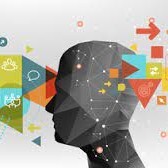
Explore More About Unconscious Bias

- 10/03/2021Social identity theory can be used in the contexts of multicultural counseling, research, and practice to understand the processes by which individuals develop and maintain social identities and groups. The theory includes three core elements: social categorization, social identification, and social comparison.
- 09/29/2021The Implicit Association Test (IAT) measures the strength of associations between concepts (e.g., black people, gay people) and evaluations (e.g., good, bad) or stereotypes (e.g., athletic, clumsy). The main idea is that making a response is easier when closely related items share the same response key.
- 09/29/2021We all have implicit biases which affect the way we live and work in the world. Identifying how these biases may negatively affect workers and the bottom line is pivotal in the development of workplace equality.
- 10/03/2021When most people think of bias, they think of a negative action taken deliberately. But there are unconscious or implicit biases that can affect your behavior or decisions without you realizing it. Unconscious biases are often based on mistaken, inaccurate, or incomplete information. These biases can have a significant impact on workplaces, shaping who gets recruited, hired, and promoted. Having an unconscious bias doesn’t make you a bad person—it just means you’re human. It’s possible, however, to interrupt bias. The first step is awareness. Below are the most common types of unconscious bias, along with tactics you can use to ensure workplace decisions aren’t being guided by them.
- 10/03/2021Most work on implicit bias focuses on increasing awareness of individuals in service of changing how they view and treat others. This is important, but insufficient to advancing greater equity of opportunity, experience, and outcomes in our institutions and communities
- 09/29/2021Over the last 20 years, millions of people have used an online test to probe attitudes they didn’t know they had.
- 09/29/2021Uncovering and overcoming our unconscious biases is not impossible. Here are four tips from Khan on how to do it.
"Us" and "Them" - How we identify with groups
The groups (e.g. social class, family, football team etc.) we belong to are an important source of pride and self-esteem. Groups give us a sense of social identity: a sense of belonging to the social world.
We divide the world into “them” and “us” based through a process of social categorization (i.e. we put people into social groups).
proposed that stereotyping (i.e. putting people into groups and categories) is based on a normal cognitive process: the tendency to group things together. In doing so we tend to exaggerate the difference between groups and the similarities of people and things in the same group.
This is known as in-group (us) and out-group (them). We categorize people in the same way. We see the group to which we belong (the in-group) as being different from the others (the out-group), and members of the same group as being more similar than they are.
It is crucial to remember in-groups are groups you identify with, and out-groups are ones that we don't identify with, and may discriminate against.
From: Simply Psychology, Social Identity Theory, Retrieved September 29, 2021, https://www.simplypsychology.o...
Which leads to...Unconscious Bias
FOUNDATIONAL DEFINITION
Unconscious bias (or implicit bias) is often defined as prejudice or unsupported judgments in favor of or against one thing, person, or group as compared to another, in a way that is usually considered unfair. Many researchers suggest that unconscious bias occurs automatically as the brain makes quick judgments based on past experiences and background. As a result of unconscious biases, certain people benefit and other people are penalized. In contrast, deliberate prejudices are defined as conscious bias (or explicit bias). Although we all have biases, many unconscious biases tend to be exhibited toward minority groups based on factors such as class, gender, sexual orientation, race, ethnicity, nationality, religious beliefs, age, disability and more.
COMBATTING UNCONSCIOUS BIAS
Participating in workshops, seminars, on-line courses and webinars are just a few ways individuals can learn more about unconscious bias and how to combat it. Holistic training includes information about how such biases can be identified and combated by individuals, groups, organizations, and in society at large. Training should also include information about structural dynamics in society that perpetuate unconscious biases. Practical strategies will help individuals combat unconscious bias in their personal and professional lives.
From Unconscious Bias, Vanderbilt University, Retrieved September 29, 2021, https://www.vanderbilt.edu/div...https://www.vanderbilt.edu/div...
| Access Date | Quiz Result | Score | Actions |
|---|
